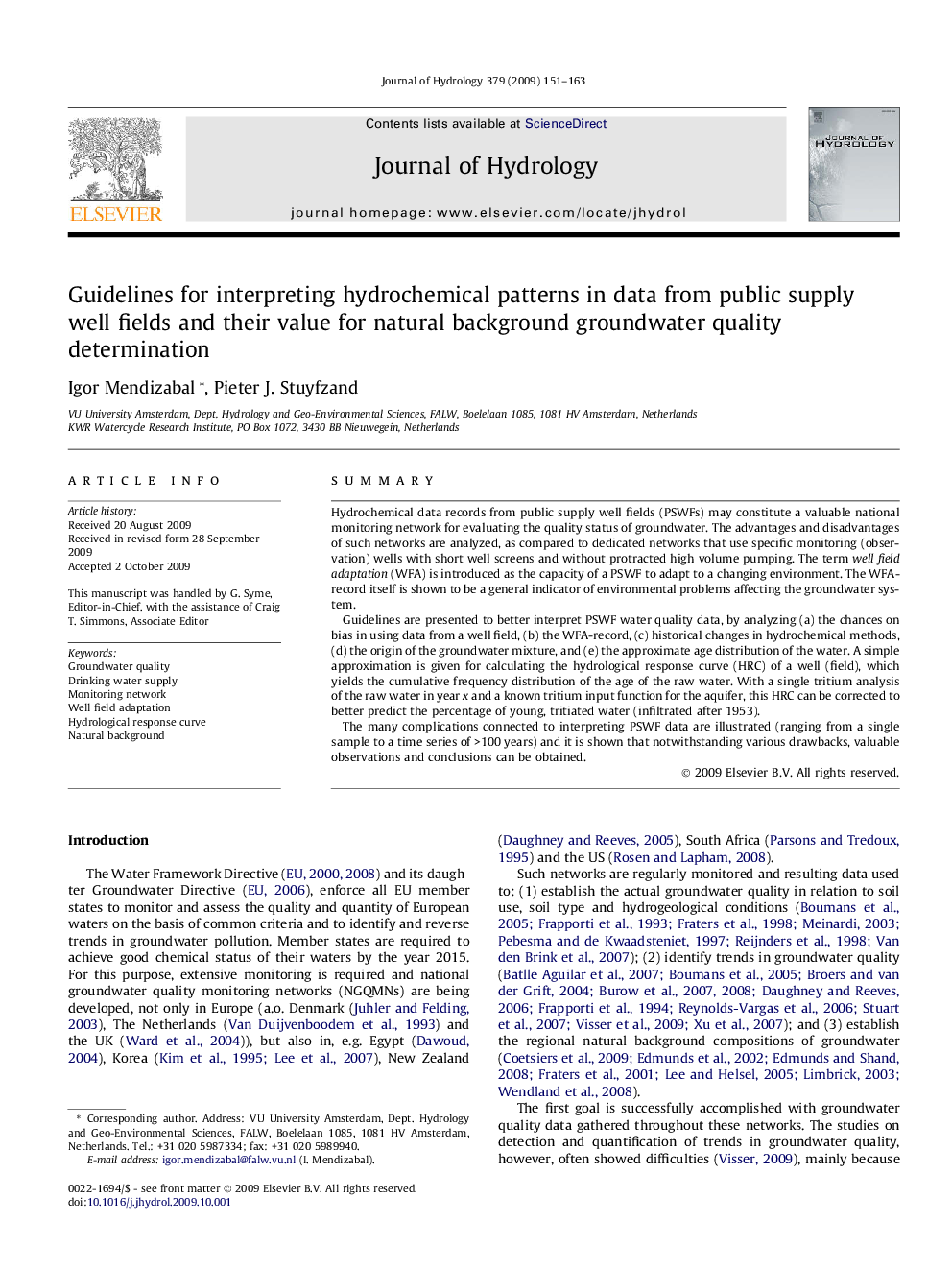| Article ID | Journal | Published Year | Pages | File Type |
|---|---|---|---|---|
| 4578520 | Journal of Hydrology | 2009 | 13 Pages |
SummaryHydrochemical data records from public supply well fields (PSWFs) may constitute a valuable national monitoring network for evaluating the quality status of groundwater. The advantages and disadvantages of such networks are analyzed, as compared to dedicated networks that use specific monitoring (observation) wells with short well screens and without protracted high volume pumping. The term well field adaptation (WFA) is introduced as the capacity of a PSWF to adapt to a changing environment. The WFA-record itself is shown to be a general indicator of environmental problems affecting the groundwater system.Guidelines are presented to better interpret PSWF water quality data, by analyzing (a) the chances on bias in using data from a well field, (b) the WFA-record, (c) historical changes in hydrochemical methods, (d) the origin of the groundwater mixture, and (e) the approximate age distribution of the water. A simple approximation is given for calculating the hydrological response curve (HRC) of a well (field), which yields the cumulative frequency distribution of the age of the raw water. With a single tritium analysis of the raw water in year x and a known tritium input function for the aquifer, this HRC can be corrected to better predict the percentage of young, tritiated water (infiltrated after 1953).The many complications connected to interpreting PSWF data are illustrated (ranging from a single sample to a time series of >100 years) and it is shown that notwithstanding various drawbacks, valuable observations and conclusions can be obtained.
